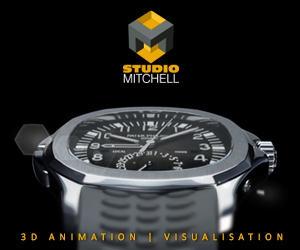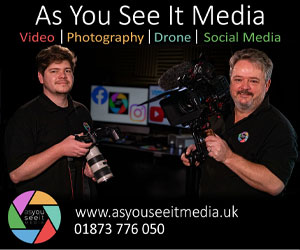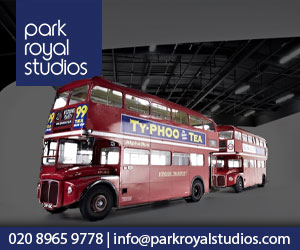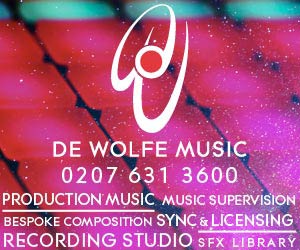Broadcast News
12/11/2015
Last Domain Of Studio Cameras, Pt 2

This article is continued from Part 1.
JVC has a formidable partnership with Bradley
JVC Kenwood's General Manager John Kelly was sure: "The biggest change is the use of robotic type cameras. There is quite a change from traditional studio camera operational set-ups towards a mixture of that with ENG type cameras on a pan/tilt head."
He is very happy about the growing use of PSC cameras around the fringes of live events, but JVC has a technical opt out. "PSC ticks well on our side. We do not make, and have not done so for a long time, a higher spec 2/3-inch type studio camera."
JVC has a 1/3-inch policy and likes the market flexibility this proffers. "There is a much wider variety of cameras being used, the reason for which is the rapid and general improvement in technology," said Kelly. "Our studio camera solution offers really good price per performance value, and people use it across a wide variety of content areas.
"It is very popular in the light entertainment market, live events, music concerts, and theatre work, and this is very much driven by a sort of OPEX calculation. Obviously if you are going on tour with a band there has to be a very clear return on investment," he added. "This type of OPEX calculation is very different to say a high end BBC studio which will often involve a CAPEX investment approach as part of a long-term proposition. We are very happy to be successful in the areas we operate in – in terms of both studio cameras and studio functionality. These are the corporate, educational, and live events markets, and these are all really strong sectors at the moment."
JVC has an ace up its sleeve when it comes to robotics and pan/tilt type cameras. "We have our commercial relationship with Bradley Engineering," said Kelly. "It has a wide range of studio and broadcast infrastructure products, and these include a set of pan/tilt heads, pan/tilt cameras, and related studio controllers.
"So JVC has immediate access to what is effectively a complimentary range of quality solutions," he added. "We previously had our traditional operated studio camera, but this now gives us a range of robotics at a time when the demand for that requirement is growing fast."
Grass Valley: indecision stalls progression
Marcel Koutstaal is VP of Grass Valley's camera division, which has a rich tradition dating back to the start of commercial TV. When full on manufacturing began after the move to Breda as part of Philips, it was almost 45 years ago. The camera brand for many years was LDK, and three years ago it jumped to LDX.
"The speed of change is accelerating and going ever faster and faster. Over 30 years we had the move from black and white to colour, then the move to 16:9, and then the move to HD. Now we are talking about 4K, 8K, HFR and HDR, and when will be the end of the COAX cable. And the move to IP is the most important thing to realise," said Koutstaal.
"In computing that change there is an important piece of understanding for the industry: life cycles will be much shorter," he added. "That's something we support on the technical side, but change impacts on user spending. If there is uncertainty about what will be the next generation technology, people postpone investments. That is negative for the whole industry and stalls progression."
This policy emerged four years ago with the LDX 80 series, and with other camera suppliers following suit, Koutstaal sees valediction for the Grass Valley tech-tactic.
"This solution is something that will be the future of more powerful technologies, and it is a part of how we think and how we design architectures. The business case – the justification for investment is all important," he said."When I talk to studio owners – they previously made investments for ten years – they now recognise that within five years or less other technologies and other formats will be requested. They say they must have flexibility in their systems."
The LDX 86 4K/6K camera for live production has three Xensium-FT CMOS sensors. For lenses Grass Valley is a big ally of both Fujinon and Canon.
Panasonic promises UHD systems at HD pricing
Speaking for Panasonic, PCSBU business development manager Stefan Hofmann, Dipl.-Ing said: "More and more PTZ cameras are in use to produce broadcast content, at least for outdoors shooting. In what may be a 'last domain' studio cameras are definitely needed due to the size of the lenses required for the job. Even in some indoor productions wide-angle lenses are needed, and PTZ cameras do not provide them.
"In some cases smaller cameras can do the job as well, but it depends on the request of the producers how the style of a picture should be composed. Not all of the smaller cameras are able to produce the same work as a typical studio camera," he added. "However, smaller cameras mean not automatically that studios are using non-studio cameras. Very often you can see EFP-style cameras with ENG lenses to be used as a studio camera solution."
Panasonic has not followed Sony and Grass Valley with a three-censor 4K camera for live event productions.
"A three sensor 4K camera is not needed to overcome the depth of field issue for sports acquisition; 2/3-inch based B4 mount cameras supporting 4K are therefore requested," said Hofmann. "We are doing this with a single sensor 1-inch solution combined with a B4-mount. A true 4K 2/3-inch based sensor has a big disadvantage: because of the small pixel size, the dynamic range of the camera becomes small."
On the issue of how IP might impact on production crews, Hofmann pointed out: "Basically there is no need to switch over from the SMPTE-311 cable to IP in the studio camera domain. Basically there is no advantage. Within a given production chain, talking about the backbone of the studio infrastructure, this is another story. In this domain IP will dominate the industry. But this will be a transition process to shift over, for at least the next couple of years and even the next decade."
Much more creative freedom
Austin Freshwater, director of professional imaging at Canon UK, gave a wider perspective of what happened with X Factor.
"Having a camera with a more cinematic look as a B-camera/VT unit is something that’s seen in a lot of studio shows. That's the case whether it's the X Factor – which Canon cameras and lenses are currently being used on – The Voice or something like Strictly Come Dancing," he said.
"It's not so much a trend as a staple of that kind of show. Having this set-up gives camera operators much more creative freedom to make these cutaway sections of the shows look however they want. There are no additional set-up adjustments that have to be made to our cameras or lenses to work in this way at all," he added. "The OPEX value in swapping lenses is a saving that’s made possible by the reliability and durability of Canon lenses. Hire firms like HotCam can invest in a variety of lenses at once because they know they're going to last no matter how many times they've been sent out on a shoot. This in turn gives operators a wider choice of lenses and lets them be more creative. The end result is a show that is more visually engaging for audiences.
"Using the X Factor as an example, the idea is that the images shot on the Canon EOS C300 and EF lenses don't necessarily match the images shot on the Canon XJ86 box lens or the Canon HJ40 mounted on the main studio camera. That's where the camera operators tell the story of the contestants by giving a different look and feel," he continued. "The depth of a show like X Factor comes from having the 'studio look' as someone performs on stage intercut with their story in a more cinematic look with a shallow depth of field. We like seeing this difference in television shows; it means camera operators are using our equipment how we like them to."
JVC has a formidable partnership with Bradley
JVC Kenwood's General Manager John Kelly was sure: "The biggest change is the use of robotic type cameras. There is quite a change from traditional studio camera operational set-ups towards a mixture of that with ENG type cameras on a pan/tilt head."
He is very happy about the growing use of PSC cameras around the fringes of live events, but JVC has a technical opt out. "PSC ticks well on our side. We do not make, and have not done so for a long time, a higher spec 2/3-inch type studio camera."
JVC has a 1/3-inch policy and likes the market flexibility this proffers. "There is a much wider variety of cameras being used, the reason for which is the rapid and general improvement in technology," said Kelly. "Our studio camera solution offers really good price per performance value, and people use it across a wide variety of content areas.
"It is very popular in the light entertainment market, live events, music concerts, and theatre work, and this is very much driven by a sort of OPEX calculation. Obviously if you are going on tour with a band there has to be a very clear return on investment," he added. "This type of OPEX calculation is very different to say a high end BBC studio which will often involve a CAPEX investment approach as part of a long-term proposition. We are very happy to be successful in the areas we operate in – in terms of both studio cameras and studio functionality. These are the corporate, educational, and live events markets, and these are all really strong sectors at the moment."
JVC has an ace up its sleeve when it comes to robotics and pan/tilt type cameras. "We have our commercial relationship with Bradley Engineering," said Kelly. "It has a wide range of studio and broadcast infrastructure products, and these include a set of pan/tilt heads, pan/tilt cameras, and related studio controllers.
"So JVC has immediate access to what is effectively a complimentary range of quality solutions," he added. "We previously had our traditional operated studio camera, but this now gives us a range of robotics at a time when the demand for that requirement is growing fast."
Grass Valley: indecision stalls progression
Marcel Koutstaal is VP of Grass Valley's camera division, which has a rich tradition dating back to the start of commercial TV. When full on manufacturing began after the move to Breda as part of Philips, it was almost 45 years ago. The camera brand for many years was LDK, and three years ago it jumped to LDX.
"The speed of change is accelerating and going ever faster and faster. Over 30 years we had the move from black and white to colour, then the move to 16:9, and then the move to HD. Now we are talking about 4K, 8K, HFR and HDR, and when will be the end of the COAX cable. And the move to IP is the most important thing to realise," said Koutstaal.
"In computing that change there is an important piece of understanding for the industry: life cycles will be much shorter," he added. "That's something we support on the technical side, but change impacts on user spending. If there is uncertainty about what will be the next generation technology, people postpone investments. That is negative for the whole industry and stalls progression."
This policy emerged four years ago with the LDX 80 series, and with other camera suppliers following suit, Koutstaal sees valediction for the Grass Valley tech-tactic.
"This solution is something that will be the future of more powerful technologies, and it is a part of how we think and how we design architectures. The business case – the justification for investment is all important," he said."When I talk to studio owners – they previously made investments for ten years – they now recognise that within five years or less other technologies and other formats will be requested. They say they must have flexibility in their systems."
The LDX 86 4K/6K camera for live production has three Xensium-FT CMOS sensors. For lenses Grass Valley is a big ally of both Fujinon and Canon.
Panasonic promises UHD systems at HD pricing
Speaking for Panasonic, PCSBU business development manager Stefan Hofmann, Dipl.-Ing said: "More and more PTZ cameras are in use to produce broadcast content, at least for outdoors shooting. In what may be a 'last domain' studio cameras are definitely needed due to the size of the lenses required for the job. Even in some indoor productions wide-angle lenses are needed, and PTZ cameras do not provide them.
"In some cases smaller cameras can do the job as well, but it depends on the request of the producers how the style of a picture should be composed. Not all of the smaller cameras are able to produce the same work as a typical studio camera," he added. "However, smaller cameras mean not automatically that studios are using non-studio cameras. Very often you can see EFP-style cameras with ENG lenses to be used as a studio camera solution."
Panasonic has not followed Sony and Grass Valley with a three-censor 4K camera for live event productions.
"A three sensor 4K camera is not needed to overcome the depth of field issue for sports acquisition; 2/3-inch based B4 mount cameras supporting 4K are therefore requested," said Hofmann. "We are doing this with a single sensor 1-inch solution combined with a B4-mount. A true 4K 2/3-inch based sensor has a big disadvantage: because of the small pixel size, the dynamic range of the camera becomes small."
On the issue of how IP might impact on production crews, Hofmann pointed out: "Basically there is no need to switch over from the SMPTE-311 cable to IP in the studio camera domain. Basically there is no advantage. Within a given production chain, talking about the backbone of the studio infrastructure, this is another story. In this domain IP will dominate the industry. But this will be a transition process to shift over, for at least the next couple of years and even the next decade."
Much more creative freedom
Austin Freshwater, director of professional imaging at Canon UK, gave a wider perspective of what happened with X Factor.
"Having a camera with a more cinematic look as a B-camera/VT unit is something that’s seen in a lot of studio shows. That's the case whether it's the X Factor – which Canon cameras and lenses are currently being used on – The Voice or something like Strictly Come Dancing," he said.
"It's not so much a trend as a staple of that kind of show. Having this set-up gives camera operators much more creative freedom to make these cutaway sections of the shows look however they want. There are no additional set-up adjustments that have to be made to our cameras or lenses to work in this way at all," he added. "The OPEX value in swapping lenses is a saving that’s made possible by the reliability and durability of Canon lenses. Hire firms like HotCam can invest in a variety of lenses at once because they know they're going to last no matter how many times they've been sent out on a shoot. This in turn gives operators a wider choice of lenses and lets them be more creative. The end result is a show that is more visually engaging for audiences.
"Using the X Factor as an example, the idea is that the images shot on the Canon EOS C300 and EF lenses don't necessarily match the images shot on the Canon XJ86 box lens or the Canon HJ40 mounted on the main studio camera. That's where the camera operators tell the story of the contestants by giving a different look and feel," he continued. "The depth of a show like X Factor comes from having the 'studio look' as someone performs on stage intercut with their story in a more cinematic look with a shallow depth of field. We like seeing this difference in television shows; it means camera operators are using our equipment how we like them to."
More Broadcast Cameras and Camera Equipment Stories
21/06/2019
ARRI Unveils New ALEXA Mini LF Camera
ARRI has unveiled its new ALEXA Mini LF camera. Combining the compact size and low weight of the popular ALEXA Mini with the large-format ALEXA LF sen
ARRI Unveils New ALEXA Mini LF Camera
ARRI has unveiled its new ALEXA Mini LF camera. Combining the compact size and low weight of the popular ALEXA Mini with the large-format ALEXA LF sen
18/06/2019
Sony's 4K HDR Professional Camcorders To Receive Additional Workflow Flexibility
Sony has announced that its palm-sized 4K HDR professional camcorders, HXR-NX80 and PXW-Z90, will receive additional workflow flexibility via a free f
Sony's 4K HDR Professional Camcorders To Receive Additional Workflow Flexibility
Sony has announced that its palm-sized 4K HDR professional camcorders, HXR-NX80 and PXW-Z90, will receive additional workflow flexibility via a free f
29/03/2019
Vinten Unveils Two Additions To Its Range Of Robotic Solutions
Vinten has unveiled two additions to its range of robotic solutions for broadcast studios. These include a new virtual reality/augmented reality (VR/A
Vinten Unveils Two Additions To Its Range Of Robotic Solutions
Vinten has unveiled two additions to its range of robotic solutions for broadcast studios. These include a new virtual reality/augmented reality (VR/A
26/03/2019
Disney Benefits From Cooke Optics' Anamorphic/i Lenses
Two VFX-heavy commercial spots for Disney highlighting the latest Star Wars toys and merchandise benefited from Cooke Optics' Anamorphic/i prime lense
Disney Benefits From Cooke Optics' Anamorphic/i Lenses
Two VFX-heavy commercial spots for Disney highlighting the latest Star Wars toys and merchandise benefited from Cooke Optics' Anamorphic/i prime lense
09/04/2018
Sony FS5 II Now Supports Apple ProRes RAW
Atomos has announced that the Sony FS5 II with the Shogun Inferno 7" HDR monitor/recorder now supports Apple ProRes RAW. There are now nine ProRes com
Sony FS5 II Now Supports Apple ProRes RAW
Atomos has announced that the Sony FS5 II with the Shogun Inferno 7" HDR monitor/recorder now supports Apple ProRes RAW. There are now nine ProRes com
05/04/2018
A Filmmaker's Guide To Sensor Sizes And Lens Formats
As a cinematographer who owns lenses designed for various formats, I am often asked "will this lens work with my camera?" or, "will this lens cover 8K
A Filmmaker's Guide To Sensor Sizes And Lens Formats
As a cinematographer who owns lenses designed for various formats, I am often asked "will this lens work with my camera?" or, "will this lens cover 8K
12/03/2018
Cooke Optics Reveals New Focal Lengths
The next focal lengths have been announced by Cooke Optics for its latest lens ranges. The S7/i purpose-built full frame lens range is to include a 16
Cooke Optics Reveals New Focal Lengths
The next focal lengths have been announced by Cooke Optics for its latest lens ranges. The S7/i purpose-built full frame lens range is to include a 16
12/03/2018
Sony Ships VENICE Full-Frame Motion Picture Camera System
Sony's much-anticipated VENICE – its next-generation CineAlta motion picture camera – has commenced shipping to customers. As previously
Sony Ships VENICE Full-Frame Motion Picture Camera System
Sony's much-anticipated VENICE – its next-generation CineAlta motion picture camera – has commenced shipping to customers. As previously
15/02/2018
Anamorphic Lens Choices For 2018
The popularity of shooting with Anamorphic lenses has seen increased interest. This has expressed itself not only in the demand for established produc
Anamorphic Lens Choices For 2018
The popularity of shooting with Anamorphic lenses has seen increased interest. This has expressed itself not only in the demand for established produc
14/02/2018
Historical Vignettes Lensed with Cooke S4/i Primes
For the historical vignettes in the upcoming CNN six-hour, six-part miniseries Pope: The Most Powerful Man in History, Dane Lawing, SOC wanted each er
Historical Vignettes Lensed with Cooke S4/i Primes
For the historical vignettes in the upcoming CNN six-hour, six-part miniseries Pope: The Most Powerful Man in History, Dane Lawing, SOC wanted each er















